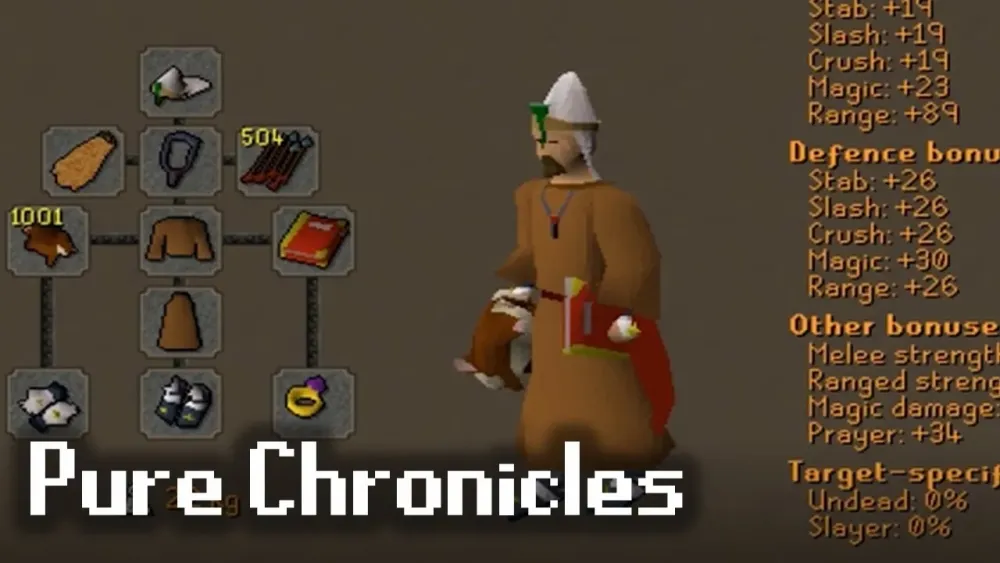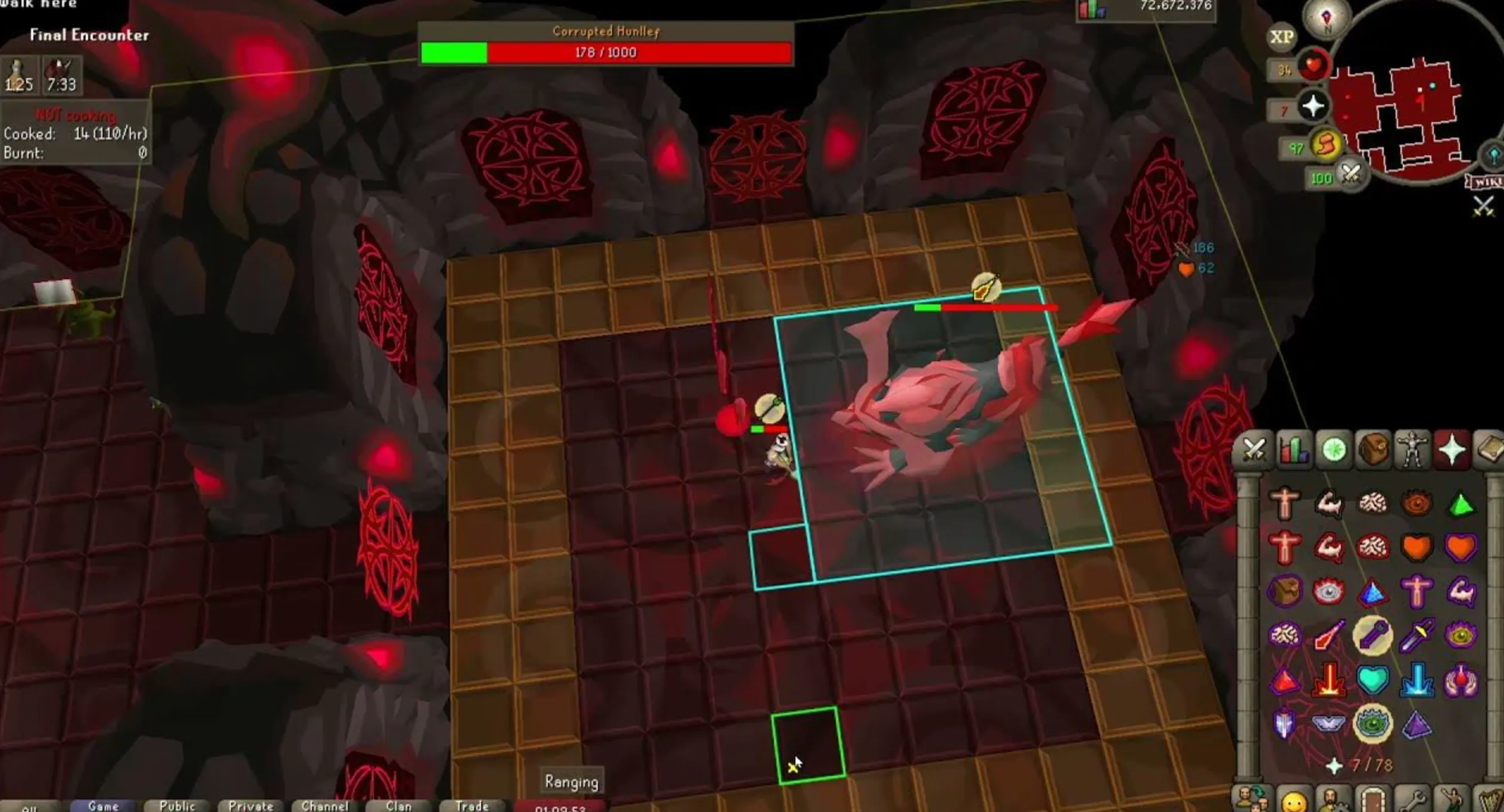Your cart is empty
OSRS: Is Shared XP Worth It? A Detailed Guide for Players

Old School RuneScape (OSRS) offers a variety of ways to train skills, and one question that often arises among players is whether shared XP is worth the effort. Shared experience, a mechanic tied to group activities like combat and certain minigames, can be a game-changer—or a waste of time—depending on how you approach it. In this guide, we’ll break down the concept of shared XP, explore its benefits and drawbacks, and help you decide if it’s worth incorporating into your OSRS journey. Whether you’re a solo grinder or a social player, this analysis will give you the insights you need to optimize your gameplay.
In OSRS, shared XP refers to experience points distributed among players who participate in group activities, most commonly in combat scenarios. When multiple players attack the same monster, the game splits the XP based on damage dealt, with some nuances depending on the situation. This mechanic encourages teamwork but can complicate training efficiency. Let’s dive deeper into how it works and where you’ll encounter it.
How Shared XP Works in Combat
When you and another player (or a group) attack a single target, the XP from that kill isn’t awarded solely to one person. Instead, it’s divided proportionally based on the damage each player contributes. For example, if you deal 60% of the damage to a monster with 100 HP, and your friend deals 40%, you’d get 60% of the XP, and they’d get 40%. This applies to combat skills like Attack, Strength, Defence, and Hitpoints.
Where Shared XP Applies
Shared XP isn’t limited to random monster slaying. It’s a key feature in several group-oriented activities:
- Multi-combat areas: Zones like the Chaos Druids or Hill Giants, where multiple players can attack the same target.
- Boss fights: Encounters like the Chaos Elemental or King Black Dragon often involve teams splitting XP.
- Minigames: Activities like Pest Control distribute XP based on participation, though not always tied to damage.
Benefits of Shared XP in OSRS
Shared XP can be a powerful tool if used strategically. While it might not always maximize individual gains, it offers unique advantages that appeal to certain playstyles. Here’s why shared XP might be worth it for you.
Faster Kills, More Loot
Teaming up means monsters die faster. In a group, you can tackle high-HP targets like bosses or Slayer creatures that would take ages solo. This speed translates to more kills per hour and, often, more loot. For example, killing the Giant Mole with a friend could double your drop rate while still earning decent XP.
Social Experience
OSRS is an MMORPG, and shared XP shines in its social aspect. Grinding solo can get lonely, but teaming up with friends or clanmates makes the experience more enjoyable. Whether you’re chatting in-game or on Discord, shared XP fosters camaraderie that solo play can’t replicate.
Access to High-Level Content
Some content, like the Chambers of Xeric or Theatre of Blood, is designed for groups. Soloing these is either impossible or inefficient for most players. Shared XP lets you participate in endgame activities, gaining access to rare drops and substantial rewards that outweigh the split XP cost.
Drawbacks of Shared XP in OSRS
While shared XP has its perks, it’s not without flaws. For players focused on efficiency or solo progression, it can feel like a downgrade. Let’s examine the downsides.
Reduced Individual XP Rates
The most obvious drawback is the XP split. If you’re training Slayer and someone tags your target, your XP per hour drops. For example, killing a Hellhound solo might net you 100 XP per kill, but with a partner dealing half the damage, you’re down to 50 XP each. Over time, this can slow your skill progression significantly.
Competition in Crowded Areas
Popular training spots like the Nightmare Zone or Sand Crabs often swarm with players. In these multi-combat zones, shared XP means you’re constantly splitting rewards with strangers, reducing efficiency. Without coordination, you might end up with less XP and fewer resources than planned.
Coordination Challenges
Group activities require teamwork, and not every player is on the same page. Miscommunication or differing goals—like one player focusing on XP while another prioritizes loot—can lead to frustration. Solo play avoids these headaches entirely.
Is Shared XP Worth It for Your Goals?
Whether shared XP is worth it depends on your priorities in OSRS. Are you chasing maxed skills, chasing profits, or just here for fun? Let’s break it down by playstyle to help you decide.
For XP Grinders
If your goal is to hit 99 in a skill as fast as possible, shared XP is usually a poor choice. Solo methods like cannoning Slayer tasks or power training at the Motherlode Mine outpace group efforts in raw XP per hour. For example, training Ranged with a cannon at Ogres yields up to 50k XP/hour solo, while splitting kills with a friend might halve that.
For Profit Hunters
Money-makers might find shared XP appealing. Bosses like Zulrah or Vorkath are soloable, but teaming up for the Corporeal Beast or Nightmare can yield higher profits through faster kills and shared loot. A team of four killing Nightmare might split 20m GP worth of drops in an hour, netting 5m each—tough to match solo.
For Casual Players
If you play OSRS for fun, shared XP is a no-brainer. Joining friends for Pest Control or a casual Slayer trip keeps the game fresh and engaging. The XP loss is negligible when enjoyment is the priority, and you might stumble into unexpected loot along the way.
How to Maximize Shared XP Efficiency
If you’re sold on shared XP—or at least willing to try it—there are ways to make it work in your favor. Here’s how to get the most out of group training without sacrificing too much.
Choose the Right Partners
Team up with players who match your goals. If you’re training Combat, find someone with similar stats to balance damage output. For bossing, coordinate roles (e.g., tank, DPS) to optimize kill times. A well-organized team can rival solo efficiency.
Target High-Value Monsters
Focus on enemies where loot offsets XP loss. Killing Chaos Elementals in a group might split XP, but the potential for a Dragon Pickaxe drop (worth 5m+ GP) makes it worthwhile. Compare this to low-value mobs like Hill Giants, where shared XP offers little reward.
Use Multi-Combat Strategically
Stick to multi-combat zones designed for groups. The God Wars Dungeon, for instance, lets you pile generals like General Graardor with a squad, maximizing kills and drops. Avoid single-combat areas where tagging ruins your rhythm.
Leverage Minigames
Minigames like Barbarian Assault or Soul Wars offer shared XP without the hassle of combat splits. You earn points based on contribution, not damage, making them a consistent way to train skills like Prayer or Hitpoints in a group setting.
| Activity | Solo XP/Hour | Shared XP/Hour (2 Players) | Loot Potential |
|---|---|---|---|
| Slayer (Hellhounds) | 30k | 15k each | Low |
| Chaos Elemental | 20k | 10k each | High (5m+ drops) |
| Pest Control | N/A | 20k (points-based) | Medium |
Note: Values are estimates based on average player stats and gear. Loot potential varies by RNG.
Final Verdict: Shared XP in OSRS
So, is shared XP worth it in OSRS? The answer isn’t black-and-white—it’s a trade-off. For pure XP efficiency, solo training reigns supreme, especially for combat skills. But if you value loot, social interaction, or access to group-only content, shared XP holds its own. The key is to align it with your goals and playstyle.
For XP-focused players, stick to solo methods unless the loot justifies the split. Profit hunters and casual players, however, can thrive with shared XP, especially in bossing or minigames. Ultimately, OSRS is about enjoyment—whether that’s watching your XP bar climb or laughing with friends over a clutch boss kill. Test shared XP for yourself, tweak your approach, and see where it fits in your RuneScape adventure.

